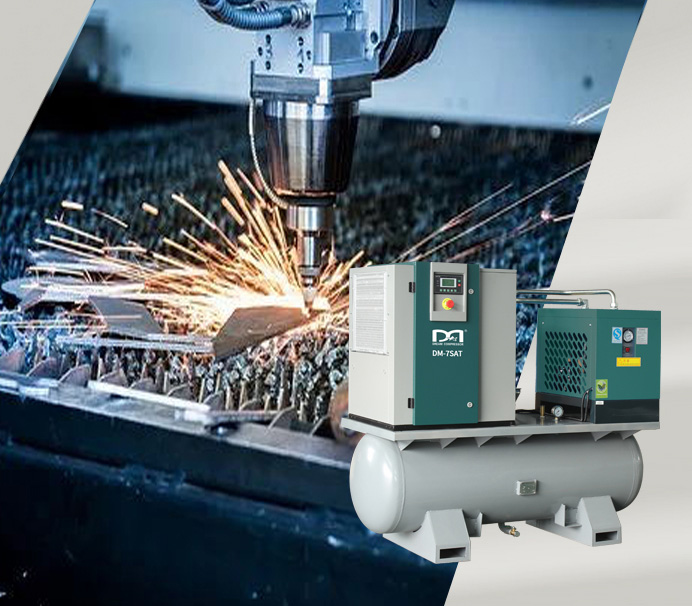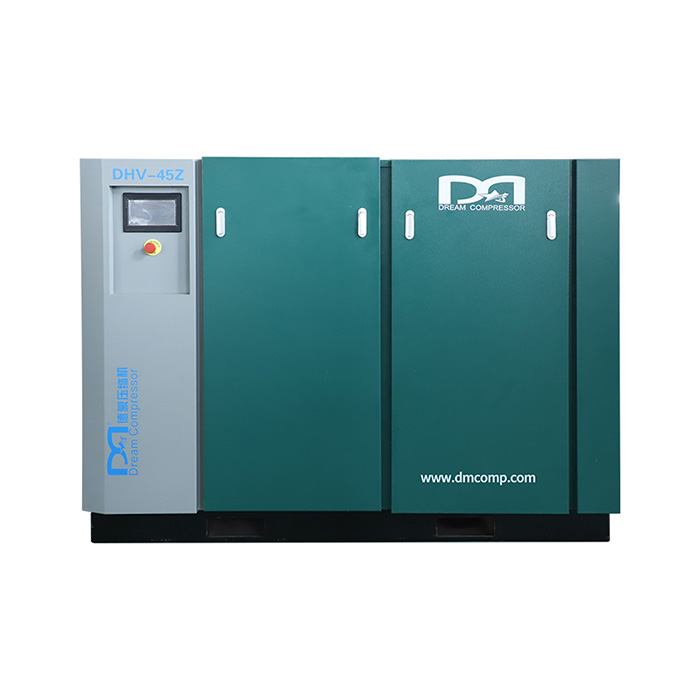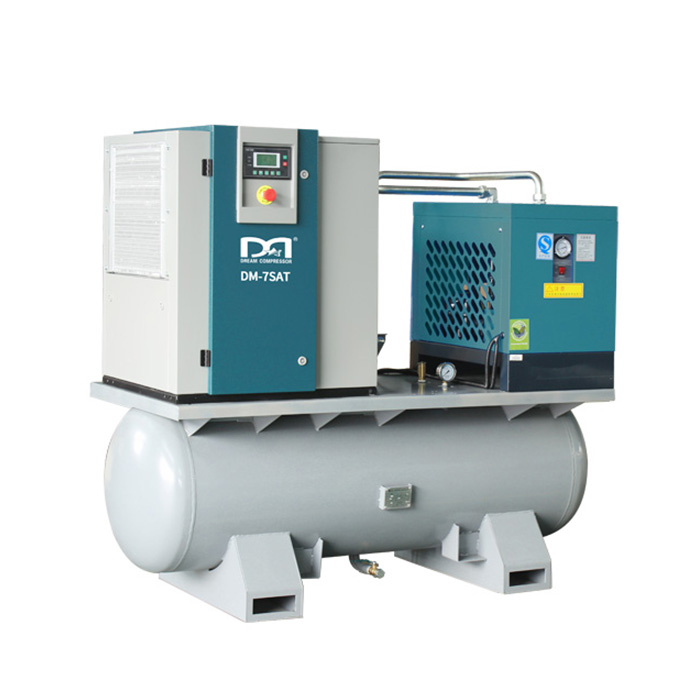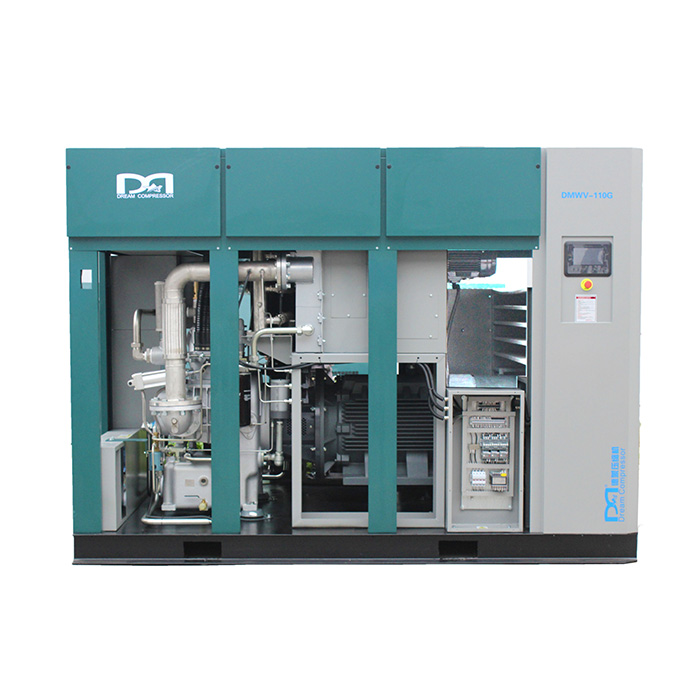Application of compressed air in the field of laser cutting
The laser cutting machine can meet the cutting requirements of various materials and complex shapes. In addition to the laser that can provide high energy, the auxiliary gas is an indispensable substance to complete the cutting process. The auxiliary gases used for laser cutting mainly include oxygen (O2), nitrogen (N2) and compressed air (Compressed Air).
Compressed air is easier to obtain than oxygen and nitrogen, and the price is very cheap compared with oxygen and nitrogen. It is very common to use compressed air as an auxiliary gas for cutting.
The quality of compressed air has a very direct impact on the quality of metal laser cutting, and the size and stability of the air pressure will affect the cutting effect. The selection of the size of the auxiliary air compressor for the matching laser cutting machine should be determined mainly according to the design of the laser cutting head used by the laser cutting machine, the auxiliary gas pressure and the size of the nozzle, so that the best air compressor can be obtained. Match with laser cutting machine.
Comparison of laser cutting with different auxiliary gases
During laser cutting, different cutting gases are selected according to the material of the cut sheet. The choice of cutting gas and its pressure has a great influence on the quality of laser cutting.
The auxiliary gases commonly used in laser cutting are oxygen (O2), nitrogen (N2) and compressed air (Compressed Air), and sometimes argon (Ar) is used. According to the gas pressure, it can be divided into high pressure gas and low pressure gas.
The functions of the auxiliary gas for laser cutting mainly include: supporting combustion and heat dissipation, blowing off the melting stains generated by cutting in time, preventing the cutting melting stains from rebounding upward into the nozzle, and protecting the focusing lens. According to the different materials to be cut, combined with the power of the laser cutting machine, different laser cutting processes are selected, and the selection of auxiliary gas is also different. The characteristics, uses and scope of application of different types of auxiliary gases are as follows:
(1) Oxygen (O2) is mainly used to cut carbon steel materials. The chemical reaction heat of oxygen and iron promotes the endothermic melting of the metal, which can greatly improve the cutting efficiency, realize the cutting of thicker materials, and significantly improve the processing capacity of the laser cutting machine. However, at the same time, due to the presence of oxygen, an obvious oxide film will be produced on the end face of the cut, and it will have a quenching effect on the material around the cut surface, which will increase the hardness of this part of the material and have a certain impact on the subsequent processing. The cut end face of the material cut by oxygen is black or dark yellow. Generally, carbon steel plates are cut by oxygen, low-pressure punching, and low-pressure cutting.
(2) Nitrogen (N2) When nitrogen is used as an auxiliary gas for cutting, the nitrogen will form a protective atmosphere around the molten metal to prevent the material from being oxidized, avoid the formation of oxide film, and realize non-oxidation cutting. But at the same time, because nitrogen does not chemically react with metals, there is no heat of reaction, the cutting ability is not as good as oxygen, and the nitrogen consumption of nitrogen cutting is several times larger than oxygen, and the cutting cost is higher than that of oxygen cutting. The non-oxidized cutting surface has the characteristics of direct welding, painting, strong corrosion resistance, etc., and the cut end surface is white. Generally use nitrogen to cut stainless steel, galvanized sheet, aluminum and aluminum alloy sheet, brass and other materials, use low pressure perforation, and use high pressure cutting. During nitrogen cutting, the change of gas flow has a great impact on cutting. When cutting gas pressure is ensured, sufficient gas flow must be ensured.
(3) Compressed Air (Compressed Air) Compressed air can be directly supplied by an air compressor. Compared with oxygen and nitrogen, it is easy to obtain and the price is very cheap. Although the air only contains about 20% oxygen, the cutting efficiency is far less than that of oxygen cutting, but the cutting ability is close to that of nitrogen, and the air cutting efficiency is slightly higher than that of nitrogen cutting. The end face of the air cut incision turns yellow. When there is no strict requirement on the color of the cut surface of the material, using compressed air instead of nitrogen cutting is the most economical and practical choice.
(4) Argon (Ar) Argon is an inert gas, which can prevent oxidation and nitridation in laser cutting, and can also be used in welding. However, the price of argon is higher than that of nitrogen, and it is generally not cost-effective to use argon for ordinary laser cutting. Argon cutting is mainly used for titanium and titanium alloys, etc. The end surface of the incision cut by argon cutting is white.
At present, the liquid nitrogen on the market is about 1,400 yuan/ton, and the liquid nitrogen used for laser cutting needs to use Dewar tanks, generally 120kg a can, and the price of 1kg is more than 3 yuan. Let's calculate it at 1,400 yuan/ton.
120x1.4=168 yuan, the specific gravity of nitrogen in the standard state is 1.25kg/m³, so the maximum usage of liquid nitrogen in a dewar tank is about: 120/1.25=96Nm³, which is converted into the cost of nitrogen per Nm³: 168/ 96=1.75 yuan/Nm³
If a domestic brand air compressor is used to provide 16bar compressed air, which provides 1.27m³ per minute, the full-load input power of this type of air compressor is 13.4kW.
The industrial electricity bill is calculated at 1.0 yuan/kWh, and the air cost per m³ is: 13.4x1.0/(1.27x60)=0.176 yuan/m³, based on the actual consumption of 0.5m³ gas per minute, and the laser cutting machine works 8 hours a day. Compared with nitrogen cutting, the daily cost saved by air cutting is: (1.75-0.176)x8x60x0.5=378 yuan. If the laser cutting machine works 300 days a year, the gas cost that can be saved in a year is: 378x300=113,400 yuan. It can be seen that the use of compressed air instead of nitrogen cutting is very economical and practical.
In recent years, laser cutting machine technology has made breakthrough developments, and is advancing in the direction of high-power, high-precision, and large-format. Under the background of intelligent manufacturing, the industrial field is showing a trend of transition from traditional processing to high-end manufacturing. The market size of the laser cutting field will always maintain a trend of rapid development, which will bring great market growth for laser air compressors. space.
So, which industries need laser cutting? In terms of rail locomotives, aerospace, automotive parts manufacturing, car body processing, etc. In short, wherever metal materials need to be cut, it is the stage for laser cutting machines.







